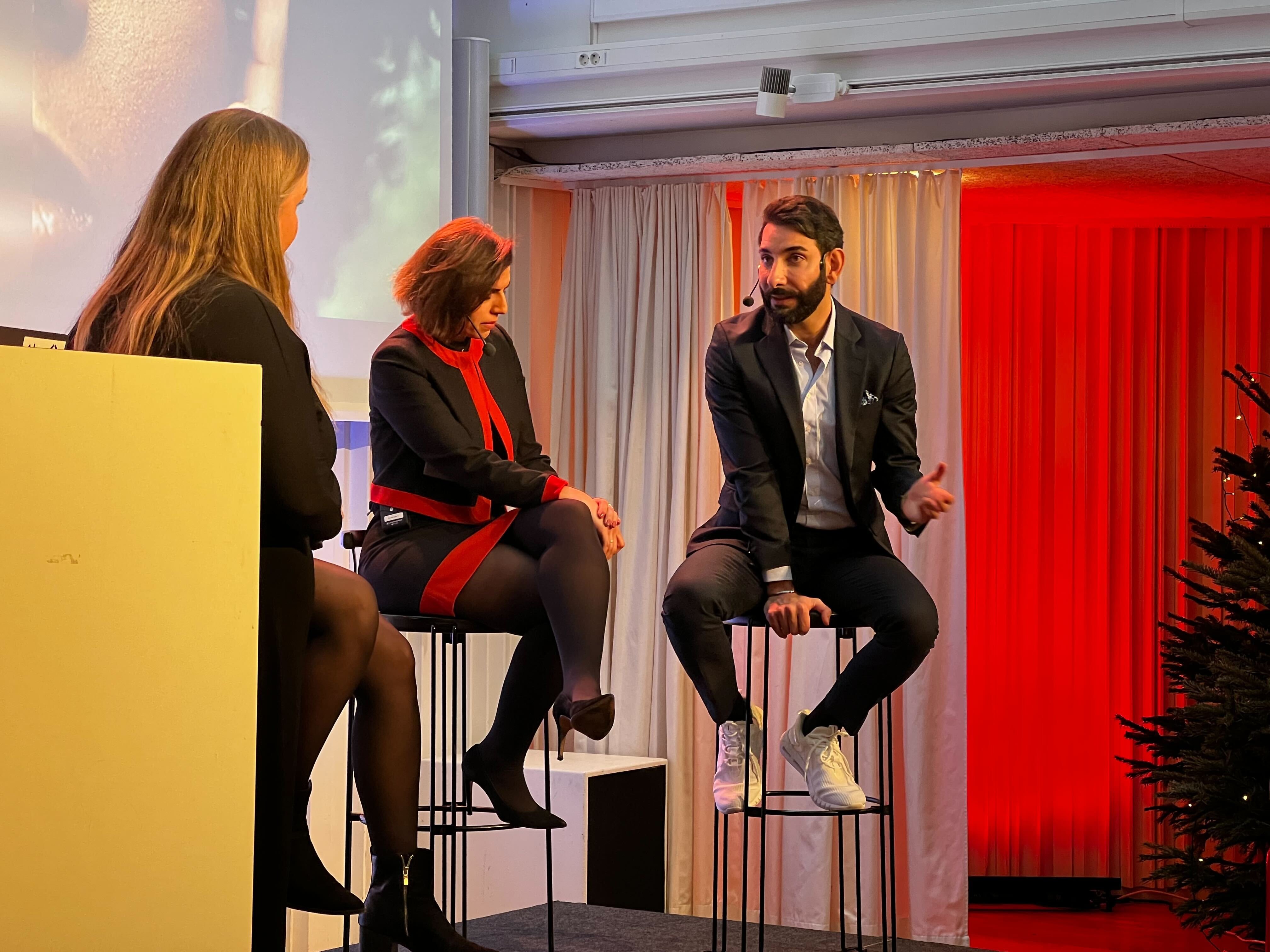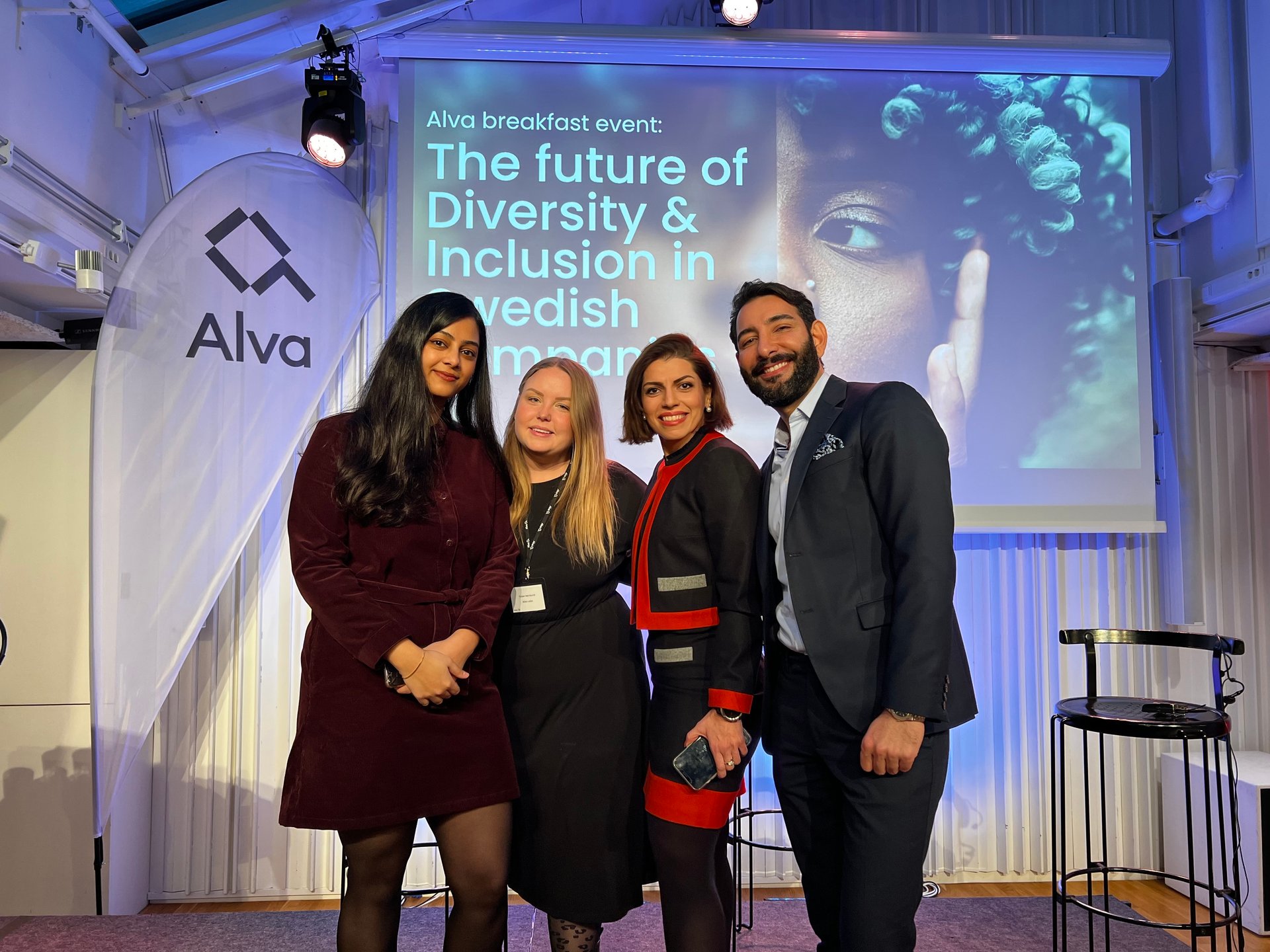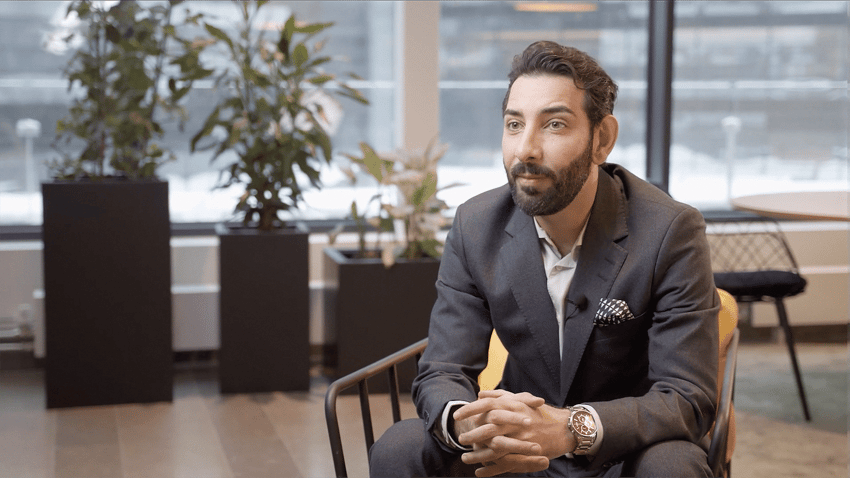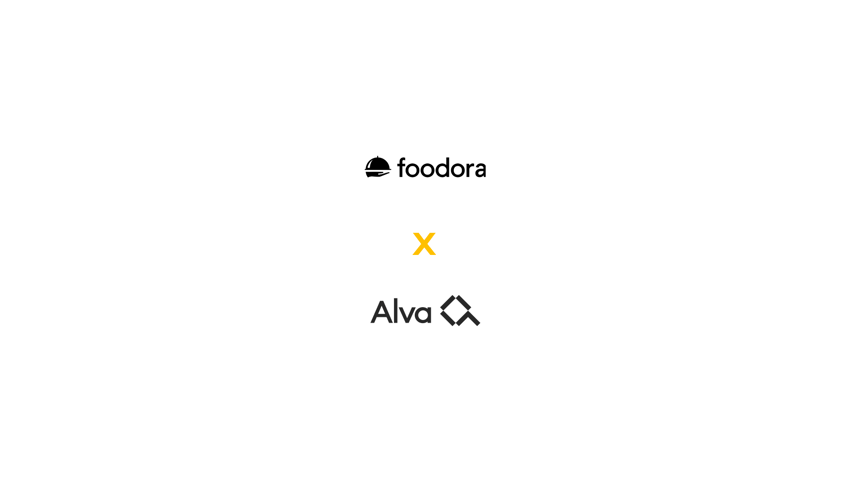All three of our panelists had one thing in common: at one point in their lives they were newcomers to Sweden. They all uniquely understand how difficult the Swedish job market can be for immigrants, particularly regarding advancing past the CV-screening stage of the hiring process.
"It's striking how difficult it is to make an impression if you don't get a chance at the first interview," Sam said.
Employer Branding: How to attract more diverse candidates
Hira has done extensive research on the uphill climb that immigrants face in the job market, and those numbers formed the basis of the discussion. The situation isn't much better for non-ethnic Swedes born in Sweden either. But how can Swedish companies improve the climate for immigrants? Aida noted that it comes down to Change Management and asking yourself these questions at the start.
- Where do we stand right now?
- What can we start?
- How should our Employer Branding, Recruitment, Onboarding and Talent Retention be aligned?
That's the macro-organizational perspective. When asked what she would advise the individual HR Manager, Aida cautioned against seeking out quick fixes.
"Represent the (diverse) people working with you and present them on websites and social media," Aida said. "Any small step that you take towards having a more diverse and inclusive workplace, communicate it outside, even if it fails. That shows you started the journey."

Resist, however, the urge towards tokenism and reducing an employee to their background. That's why Sam advised the audience to take the commercial aspect out of Employer Branding, and look beyond factors like gender, age, or skin color. Changing cultures comes down to making all people feel welcome in their working environment.
Don't overlook the Inclusion aspect of your D&I program
"That feeling of belonging needs to be there in order to take advantage of the diversity that exists," Hira said.
She urged Stockholm's HR and TA community to go beyond the metrics, and look at how companies include their diverse talent in the greater workforce. That requires education and company-messaging campaigns, with the aim of breaking down biases.
Sam said this is why he likes using Alva at key stages of SEB's hiring processes, to see how the candidate will fit with other members of the existing team. It's about highlighting how different personalities work together, encouraging diversity of thought, and allowing leaders to better approach inclusion for both the individual and the team.
"You realize as a leader that (a certain candidate) might need a bit more effort to feel included," Sam said.
When building inclusive programs, take the long-term approach. That means workshops and training on topics like constructive feedback, but also zooming out and looking at how inclusion plays a role across the Employee Life Cycle. What's your policy for when talent is onboarded? How is it with Exit Interviews, and what feedback can lead to even better company policies?
"What tools can we give the employees to have them understand what inclusive behaviors can be?" Hira said. "And what processes can we have in our everyday life? How can we make sure that people actually feel heard?"
KPIs should drive your company's recruitment and Swedish diversity policy
It's a cliché, but you can't improve what you can't measure, right? So it's critical to set targets for increasing diversity across ethnic, gender, and ages. The trick for HR Managers and TA Specialists is making the process fair for all applicants. In the broader scope of an unbiased recruitment process, that means giving an opportunity to everyone and then picking the best person based on their skills.
Good recruitment comes down to sourcing, and there's a reason companies are shifting towards having in-house TA Specialists. It allows you to target candidates to match your D&I goals. But don't forget the role that bias plays in recruitment. Forward-thinking companies, Sam noted, are the ones that understand that bias exists, and do exercises to reveal those unconscious feelings. Furthermore, diversity goals help as a check against relying on personal networks and big-name universities, for example, as quality signals in the recruitment process.
-1.jpg?width=4032&name=Image%20from%20iOS%20(1)-1.jpg)
The topic of sourcing is something particularly close to Aida, given how she works with skilled migrants who want to move to Sweden with Venoxa. How can the broader HR community in Stockholm attract that talent to their companies? Her recommendation is referrals. Or, as Sam followed up: ask your employees serve as ambassadors for bringing in diverse talent.
Progressive companies should also take honest looks at their recruitment efforts, and ask themselves how they're minimizing bias at each stage. If a certain type of candidate is always making their way through to the final stage, companies should ask themselves why.
Retention and how to get your employees to stay
Psychological safety is one of the most important factors driving retention. If an employee sees potential to grow and feels encouraged to speak up, they'll want to stay. Hira spoke to her initial experiences at Alva, and the culture of psychological safety allowed her to bring her true self to meetings and strategic discussions.
What you want to avoid is promoting the image of a diverse and inclusive company in the recruiting process, only for the candidate to realize there's limited opportunities for development or growth.
But feeling included also means fair compensation and a clear path for advancement in the organization. Aida especially emphasized the importance of addressing the salary gap and promotions. "Create the atmosphere for providing equal opportunities," she said.
Sam was in agreement. In fact, he included both of those factors in his five-point checklist for retention:
- Create a purpose in uniting people around the target. We agree (as a team) on the target.
- Sharing power. Everyone has the chance to share their opinion about the direction we're taking.
- Everyone has an equal chance to learn and grow.
- Psychological safety. I don't need to change my behavior to feel accepted.
- Sympathetic listening. Leaders should make sure that everyone on the team has a channel to express their ideas.
But don't just set a strategic framework and expect it to run smoothly. Smart leaders check in regularly with employees (such as through a pulse/engagement survey) to make sure they truly have opportunities to express themselves and be heard.
.jpg?width=4032&name=Image%20from%20iOS%20(3).jpg)
Alva Events is just getting started
Before we wrap up, a big shout out to the more than 100+ people who braved sub-zero temps in Stockholm to participate in this important discussion. Thank you for coming to Alva's inaugural Breakfast Series event, and we're looking forward to having everyone back for continued discussions on the most pressing HR topics in the future. A special thanks to Aida, Sam, and Hira for being fountains of knowledge on this topic.
If you're curious about how you can better equip your organization from a D&I perspective, check out our previous webinars on the topic or get in touch with us about a private workshop.






